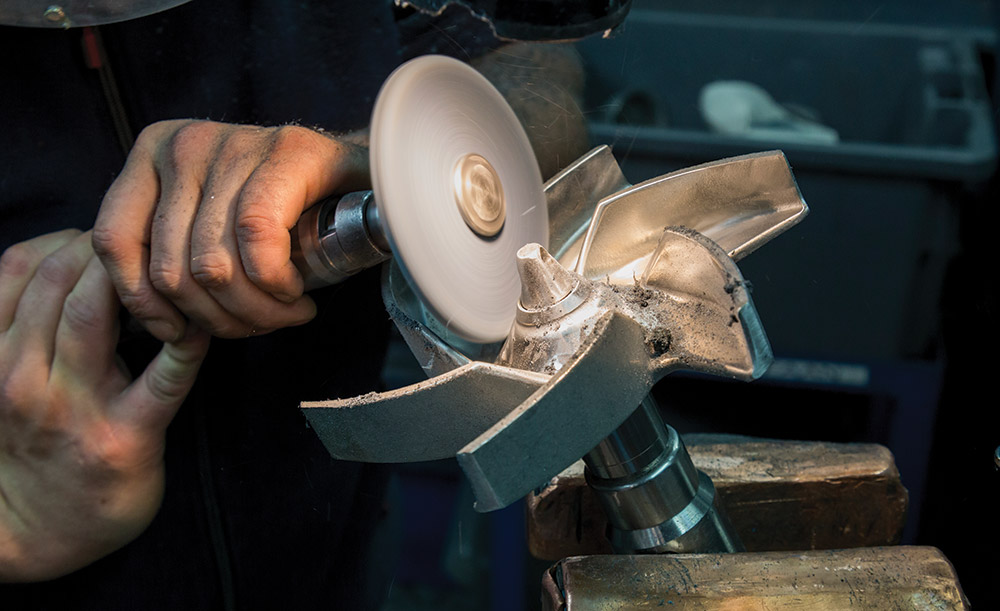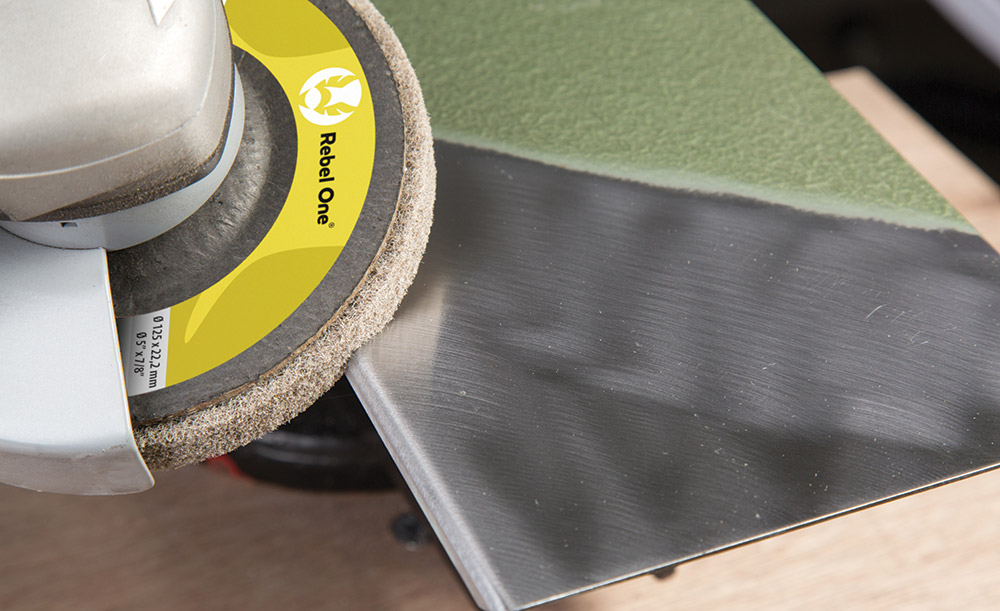Above: The Rebel One S-Line can remove scratches, correct abrasive flaws, and pre-polish.
3D abrasive materials help less-practiced users achieve a professional finish
October 2018 - Beautiful stainless steel finishes—including the ones found in industrial kitchens, on handrails and tanks and vessels, and in pharmaceutical, food processing, medical and aviation applications—are not easy for manufacturers to achieve. An impeccable finish determines the look and feel of the product, as well as the price the consumer is willing to pay.
“Achieving the perfect finish using traditional abrasive materials has been a difficult feat for a long time now,” says Adam Staley, business development manager at Cibo Abrasives USA.
Cibo Abrasives USA is a Cumming, Georgia-based division of Cibo, a Belgian, family owned company that has grown from a regional abrasives converter in Europe to a global abrasives manufacturer. Through processing materials inventively and combining different materials, Cibo strives to produce innovative products. One example is the patented RCD interleafed flap disc, which ensures fast material removal and high-quality finishing by combining an abrasive cloth with a new generation of surface conditioning material.

Supporting operators
“Operators used to be given the time to gradually grow into true abrasives specialists so that, in time, they would have enough expertise to achieve the desired result,” Staley points out. “That time is no longer available. Flexibility now reigns supreme. Operators are often utilized for multiple jobs, [they] change jobs faster or [they] decide to relocate within the same company. As a consequence, true finishing skills are no longer sufficiently available.”
Fewer practiced users mean that the need for more forgiving abrasive materials is high, especially because in some industries the demand for that perfect, professional finish continues to grow. Add in rising wages and the need to be able to grind and finish faster and more comfortably, it is “only logical that the world of abrasives is now focusing on 3D abrasive materials, such as the semi-flexible unitized [products],” Staley says.
“With this material, you achieve better results in stainless steel finishes and high-quality titanium and cobalt alloys with less risk for mistakes and with more comfort,” he continues. “Due to improved evolutions in the welding process, less material must be ground off, and there is less need for heavier processing. The majority of actions performed on stainless steel can now be effortlessly achieved using unitized abrasive material.”

Fiber, resin, grains
Unitized material, such as that featured in the Rebel One from Cibo, is part of the latest generation of 3D abrasive materials. This material is made from a 3D web of nylon fibers, impregnated with synthetic resin and infused with abrasive grains, Staley explains. “Different layers are pressed into plates of a specific density or hardness.”
Cibo has complete control over the production of these unitized materials so it can “guarantee a high stable quality, while also responding with speed and flexibility to the demand or new trends in the market.”
The full range of the series is 100 percent free of solvents, “which is important because the evaporation of solvents in the production of unitized materials contributes to smog formation and is a threat to the ozone layer and our health.”
Combining unitized materials creates discs that can achieve greater performance. Cibo has a patented new technology called Combi unitized, a combination of two specific unitized discs. “The hard core ensures flawless grinding of the weld, while the soft sides of the flexible disc create the very best finish,” Staley says. “In other words, it’s the ideal disc for rapid, easy and risk-free finishing of a stainless steel inside corner—down to the last detail.”

Uniform finish
Comfortable grinding without risk is always preferable, but this Cibo innovation also brings two processes together in one disc, allowing the work to be completed faster. In applications where two discs are required to achieve the perfect weld, with the Combi unitized, finishing departments only need one, eliminating the need for operators to change discs mid-project.
And, like with the other unitized material, a user has total control while finishing, the discs operate at a cooler temperature than the more traditional abrasive materials, and the Combi unitized line promises a uniform finish.
Because these types of discs can be used by both experienced and occasional users, non-woven 3D abrasive materials in general and unitized in particular are both the present and the future of abrasives.
Cibo Abrasives USA
Cumming, Georgia
704/770-1698

